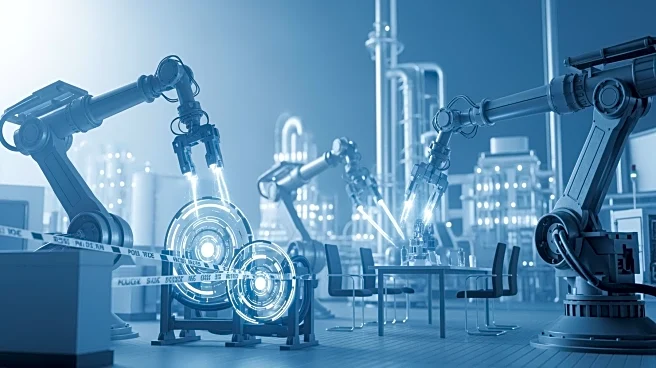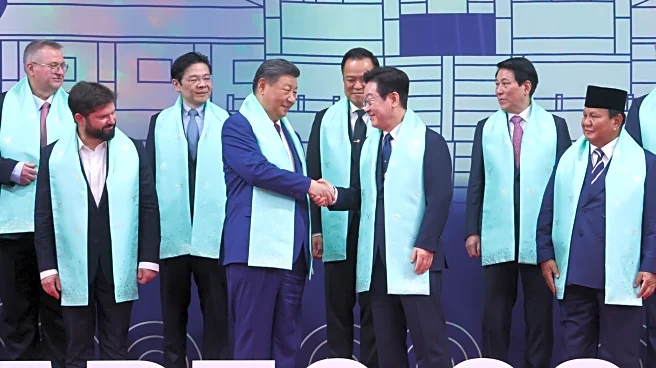What's Happening?
Interlune, a pioneering mining company, has announced the discovery of helium-3 deposits on the lunar surface, marking a significant step towards extraterrestrial resource extraction. Helium-3, a rare
isotope not found in significant quantities on Earth, is abundant on the moon due to solar wind exposure over billions of years. This isotope is highly valued for its potential use in nuclear fusion reactors, offering a pathway to limitless, waste-free energy. Interlune has identified these reserves using advanced surveying techniques and plans to commence commercial harvesting. The company has developed a prototype harvester capable of processing 110 tons of lunar soil per hour, addressing the logistical challenges of lunar operations. This initiative aligns with broader geopolitical ambitions, as the United States and China compete for lunar dominance.
Why It's Important?
The discovery and potential mining of helium-3 on the moon could have profound implications for the energy sector, offering a clean and virtually limitless energy source. This development could significantly impact industries such as quantum computing and medical imaging, where helium-3 is used as a coolant. The high value of helium-3, estimated at $20 million per kilogram, underscores its economic potential. The venture is attracting significant investment, with Interlune securing agreements to supply extracted helium-3, indicating early market confidence. However, the initiative raises ethical questions about equitable access to lunar resources under the Outer Space Treaty, with critics warning of a new colonial rush. Supporters argue that the technological benefits, such as safer fusion energy, could help combat climate change.
What's Next?
Interlune plans to operationalize its mining operations by 2028, coinciding with NASA's Artemis program and China's Chang'e missions, which could provide necessary infrastructure for transport and processing. The success of helium-3 mining could catalyze a broader space economy, including the extraction of water ice, rare earths, and oxygen from lunar soil. This could support permanent lunar settlements and reduce reliance on Earth-supplied resources. If Interlune's prototypes prove viable, it could attract billions in investment, transforming space from a scientific frontier into a profitable domain.
Beyond the Headlines
The pursuit of lunar helium-3 mining highlights the intersection of technological innovation and geopolitical strategy. As nations and private entities vie for control of lunar resources, the ethical implications of space mining become increasingly significant. The potential for shared technological benefits, such as safer fusion energy, could reshape energy geopolitics and contribute to global efforts to combat climate change. However, the high costs of space travel and the unproven economics of returning materials to Earth remain significant challenges.













